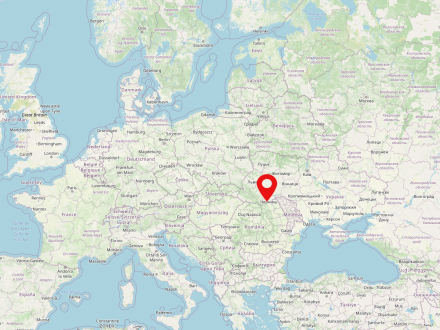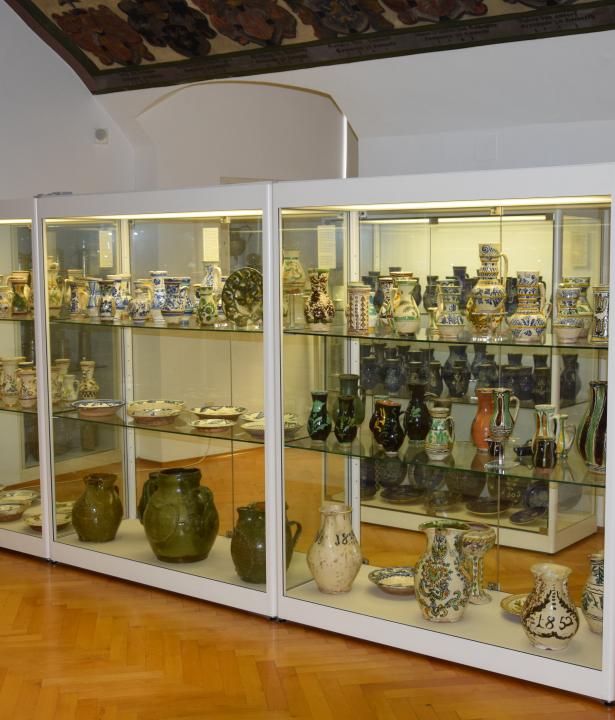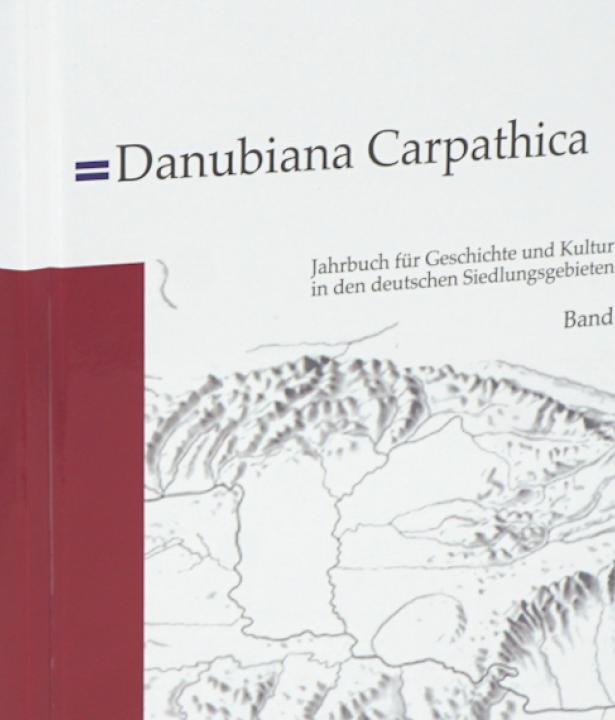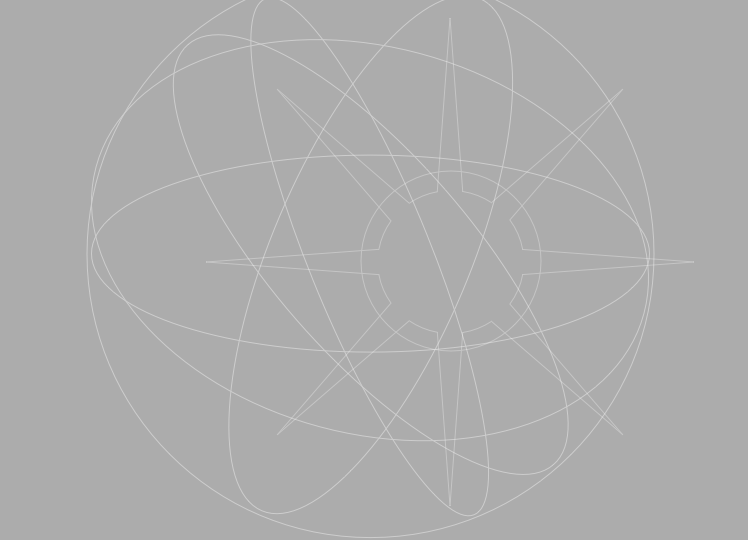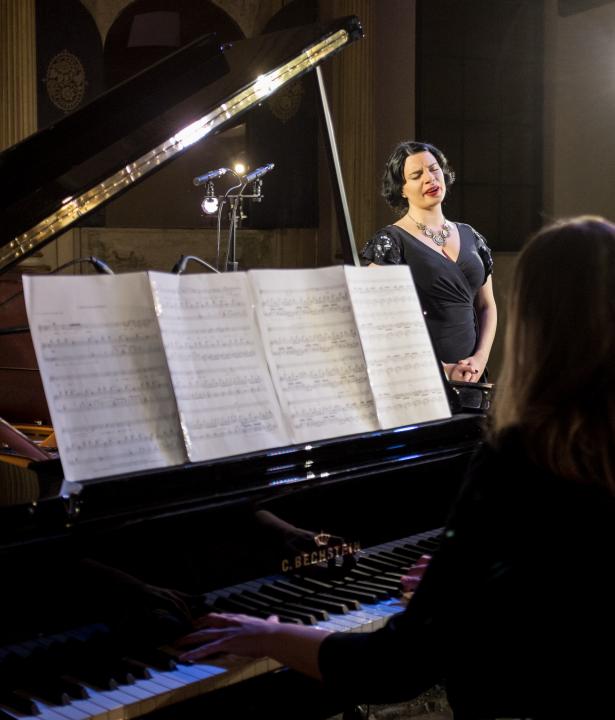The collection of the Bukovina Institute is divided into a specialized library and an archive, which contains written materials, postcards and (historical) photographs, as well as audio and film material and everyday objects. The main focus of the collection is Bukovina, especially in its history of interconnection with other (historical) regions in (south)eastern Europe, with the present-day Federal Republic and Austria.
Text
The library of the Bukovina Institute is a specialized scientific library with about 18,000 volumes. The collection focuses on the history, culture, literature and regional studies of . In addition, the collection contains literature on the neighboring regions of Eastern and Southeastern Europe as well as on the subject of flight and expulsion.
This specialized library developed from the special library of the well-known bibliographer Erich Beck, which was purchased by the district of Swabia in 1989. This collection of books was considered to be the largest collection on Bukovina in Western Europe and is a special feature of the Institute. In addition, over the years, generous donations were made by well-known scholars, for example, the private library of the now deceased President of the Romanian Academic Society, Dr. Constantin Sporea and his wife Adele Sporea. In 1996 the Bukovina Institute took over the library of the "Bundesarchiv der Landsmannschaft der Buchenlanddeutschen", and at the beginning of 2000 the Norbert Gaschler collection. In 2004/2005, the collection was expanded with the addition of works on permanent loan from the Augsburg University Library, including about 2,500 volumes of Romanian or Russian and Ukrainian linguistics and literature as well as fiction in the original language.
Bukovina
deu. Bukowina, ukr. Буковина, ukr. Bukowyna, ron. Bucovina, deu. Buchenland
Bukovina is a historical landscape in modern Romania and Ukraine. The northern part is situated in the Ukrainian Chernivtsi Oblast, while the southern part is part of the Romanian Suceava County. The region once formed a part of the Principality of Moldavia and the Habsburg Monarchy.
This specialized library developed from the special library of the well-known bibliographer Erich Beck, which was purchased by the district of Swabia in 1989. This collection of books was considered to be the largest collection on Bukovina in Western Europe and is a special feature of the Institute. In addition, over the years, generous donations were made by well-known scholars, for example, the private library of the now deceased President of the Romanian Academic Society, Dr. Constantin Sporea and his wife Adele Sporea. In 1996 the Bukovina Institute took over the library of the "Bundesarchiv der Landsmannschaft der Buchenlanddeutschen", and at the beginning of 2000 the Norbert Gaschler collection. In 2004/2005, the collection was expanded with the addition of works on permanent loan from the Augsburg University Library, including about 2,500 volumes of Romanian or Russian and Ukrainian linguistics and literature as well as fiction in the original language.

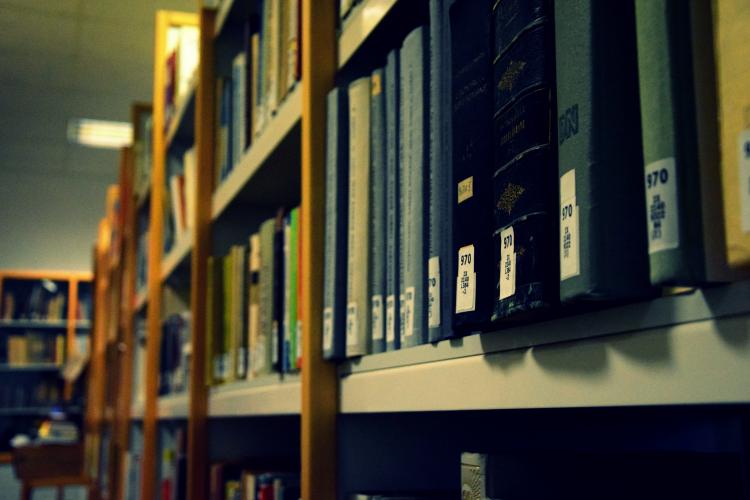
Bukowina-Institut, Free access - no reuse
Bukowina-Institut, Free access - no reuse
Text
The depot of the Bukovina Institute contains about 1,300 three-dimensional objects, which the Institute has purchased or received through donations and bequests of (former) inhabitants of Bukovina. These are primarily historical costumes and everyday objects, which illustrate the cultural and ethnological diversity of the region and are of socio-historical value. A unique feature in the German-speaking world is the extensive collection of pysanki, which reflects the traditional arts and crafts of Bukovina.


Bukowina-Institut, Free access - no reuse
Bukowina-Institut, Free access - no reuse
Text
The Archive for Written Material and Media includes the written records of the Institute and the Landsmannschaft der Buchenlanddeutschen as well as the estates of persons of Bukovina background. The collection also includes journals and correspondence of the "Landsmannschaft der Buchenlanddeutschen" - both the federal association and numerous regional associations. Arranged according to subject matter and countries, there are also thematic folders with newspaper clippings about (South) Eastern Europe. An extensive collection of historical postcards and photos, rare newspapers both in the original and on microfilm, as well as audio and film material round off the constantly growing collection.


Bukowina-Institut, Free access - no reuse
Bukowina-Institut, Free access - no reuse
Text
The collection has been supplemented, especially in recent years, by a comprehensive number of audio interviews: As part of a BKM-funded oral history project, the archive was thus able to obtain around 150 newly conducted interviews with so-called Bukovina Germans and their descendants. At the same time, the interview project expanded the three-dimensional collection, as numerous personal mementos were handed over to the archive for permanent storage in the course of the interviews. In addition, the Institute's photo collection also grew by tens of thousands of photographs. Even today, countless records, pictures, letters and official documents related to Bukovina are still in private hands. Because they are difficult to access for both scholars and the public, the (digital) photo collection in the interview project allows subjective perspectives on the past, which provide material for a wide variety of questions.
Contained materials
Books
ca. 18.000
Periodicals
273
Newspapers
derzeit laufend 33
Maps
100
Postcards
ca. 500
Audio files
über 200
Externe Links
External Image



